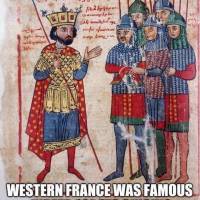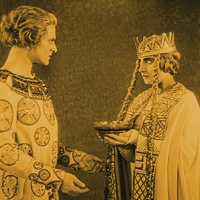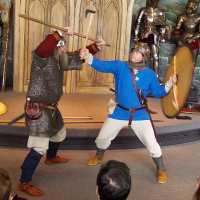There’s this guy on my connecting bus who usually tells me stories about UFO cover-up conspiracies and sci-fi violence. His name is Marvin and he looks kind of like Barack Obama but he can’t stand Barack Obama’s administration – particularly its policy on drone strikes. He loves talking about how our life on earth will end: space aliens will suddenly appear one day and blow our planet to smithereens. Resistance is futile.
I’m never sure if he shares his actual beliefs, his sense of humor, or some combination of the two. He’s a hard worker who prefers to work alone and he loves to talk your ear off either about sports or space aliens – and since I’m useless with sports talk, space aliens it is.
My usual contributions to Marvin’s one-way conversations are smiles and nods and the occasional “is that so?” – I gave up trying to challenge his beliefs when he got really fired up one day trying to convince me that all Muslims are evil. So now I just listen to his stories which are usually his descriptions of violent scenes from the latest DVD he’s borrowed from the library.
Yesterday he was on about werewolves so he told me about an actual account of a werewolf the size of a cow who terrorized rural France in the 1700’s, devouring somewhere in the neighborhood of 200 men, women, and children until a hunter shot him dead with a silver bullet: La Bête du Gévaudan.

An 18th century print of the Beast of Gévaudan ravaging a woman. I love old drawings of vicious creatures. (source: wikipedia)
There’s a film about it called Brotherhood of the Wolf. I vaguely remember this film coming out but I never saw it. Marvin says it’s good, but the story focuses mainly on the political challenges of gathering support to hunt the beast. He also warned me that the beast part is corny – some dumb robot or something – so it’s not the best place to see the beast. If you want to see the beast, you should check your local library. Marvin claimed to have borrowed a very rare book from the Free Library of Philadelphia once that had photographs of its carcass.
La Bête du Gévaudan reminded me of Bisclavret, a Breton story told by Marie de France. I didn’t have much time to tell the story, but I shared the gist of it:
There’s a werewolf tale from 12th century France set in a region in the Northwest called Brittany. It all starts with a noble named Bisclavret. Now, Bisclavret spends several nights away from home each week. No one knows for sure where he goes – not even his wife. This bothers his wife as you can well imagine, so one day she finally asks her husband to tell her where he goes. He confesses that he has been keeping a terrible secret from her for years that he cannot bear to tell her. She assures him that she loves him so dearly and that whatever it is, no matter how terrible, knowing it will only make their love stronger. So moved is Bisclavret by his wife’s display of her undying devotion to him that he finally decides to share his terrible secret with her: Each week he goes deep into the woods until he reaches an abandoned chapel. There, he takes off his clothes, and shortly after he hides them nearby, he turns into a werewolf and goes out terrorizing the countryside.
After a few days, he returns to the chapel and retrieves his clothes. He puts them back on and returns to his normal life as a man. He does this each week. The wife is horrified by Bisclavret’s terrible secret. It wasn’t at all the secret she was expecting to hear. Not knowing how to respond, she asks her husband which abandoned chapel he uses. Bisclavret pleads with her, promising that if she lets him keep just this one secret, he will never keep anything else secret from her as long as they live. She presses him for it though, so he finally gives it up.
Well, it turns out the wife had a paramour and since they had been trying to figure out a way to get it together for years, she plots with her lover to have him fetch her husband’s clothes. The lusty bachelor goes out and takes the noble husband’s clothes and brings them back to the wife, who hides them among her things.
A couple days later Bisclavret returns to the chapel but his clothes are nowhere to be found. You can imagine how he howled when he discovered he would be trapped in wolf form for the rest of his days.
Just then, Marvin has an epiphany, “I’ll bet it’s that same sucker and they finally got him!”

Bisclavret befriends the king (source: wikipedia)
Well, there’s another whole half of the story! Here’s how it ends according to Marie de France: Bisclavret manages to befriend a king and they devise a way to get his clothes back. The unfaithful wife and her paramour are then cursed with a deformity that will stay in their bloodline, afflicting their offspring for all eternity… but today I’ll go with Marvin’s ending of this tale – unless, of course, he’s since found a way to tie it to drone strikes and the space alien apocalypse.















